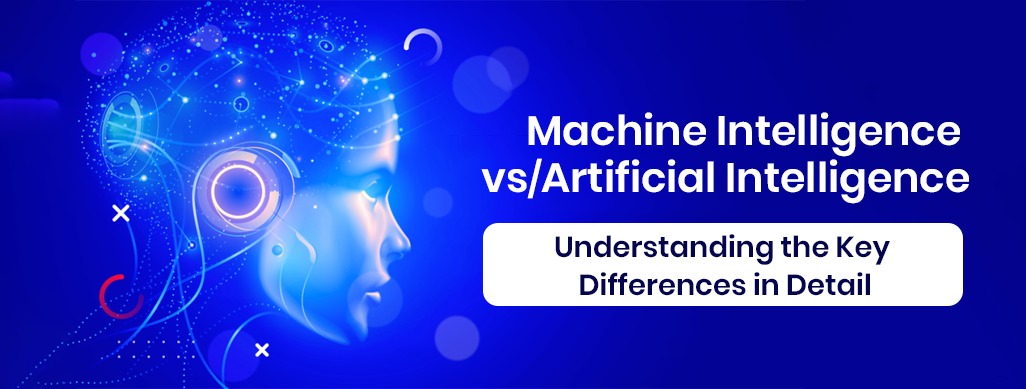
We use cookies to ensure that we give you the best experience on our website.
By using this site, you agree to our use of cookies. Find out more.
Machine Intelligence and Artificial Intelligence are two interlinked concepts, but are distinct in the modern technology world. Comprehending the distinction between these two concepts it is very important for companies which wish to explore the power of intelligent systems efficiently.

The rapid development of technology has resulted in the natural development of new terms that are frequently used in place of one another, resulting in confusion among technology enthusiasts and experts alike. Machine Intelligence (MI) and man-made reasoning (simulated intelligence) are two examples of these terms. In any case, in spite of being firmly associated and regularly united, these ideas are not indistinguishable. To really use these innovations, technologists and merchants should know about the distinctions.
The broad field of computer science known as artificial intelligence (AI) focuses primarily on the creation of systems that are capable of performing tasks that typically call for human intelligence. Thinking, critical thinking, normal language cognizance, design acknowledgment, and direction are totally shrouded in these works. The eventual goal of AI is to build machines which can mimic human cognitive functions, letting them to act independently in intricate surroundings.
Artificial Narrow Intelligence (ANI): Today this is the most general form of AI, aimed to perform a small range of works. Illustrations contain simulated assistants like- Siri and Alexa, reference engines on platforms like Netflix and autonomous means of transportation. ANI methods are extremely specified but do not have the capability to execute works beyond their prescribed scope.
Artificial General Intelligence (AGI): AGI refers to machines that have the skill to comprehend, learn and relate intelligence across a wide-ranging of tasks, akin to a humans.Since no ongoing artificial intelligence framework has accomplished this degree of summed up insight, AGI is as yet a hypothetical idea.
Artificial Super Intelligence (ASI): ASI is a normal thought where machines outflank human information in all elements, containing vision, decisive reasoning and the ability to grasp individuals on a more profound level. While it is a famous subject in science narrative, it is not yet a reality and remains a subject of ethical and philosophical discussion.
Machine Insight (MI) is a development of computer based intelligence, yet it is habitually described by its weight on the capacity of machines to learn and adjust through experience. MI focuses on creating models and systems that make it easier for machines to improve over time without obvious human intervention. Other way round, MI systems are made to imitate human-like learning procedures.
MI is greatly reliant on data. More data an MI system has, the better it can learn and make forecasts. This learning process includes identifying patterns in data and using those patterns to make decisions or predictions. MI is frequently used in applications where adaptableness and self-improvement are vital, like- personalized marketing, scam detection and prophetic maintenance.
Fundamental Differences Between Machine Intelligence and Artificial Intelligence
Although Machine Intelligence and Artificial Intelligence are associated, they vary in many important aspects. Industries that wish to effectively power these technologies need to be aware of these differences.
.jpeg)
Numerous developments and applications are consolidated in the field of man-made intellectual prowess. It encompasses everything from simple rules-based systems to intricate neural arrangements that imitate the human brain. From automating client support with chatbots to making the most recent mechanical innovation for collecting, recreated knowledge can be used for various tasks.
Application of AI and MI AI and MI are more than just theories; As shown below, it can be used in a variety of fields and sectors.
Machine Intelligence and Artificial Intelligence are two interlinked concepts, but are distinct in the modern technology world. Comprehending the distinction between these two concepts it is very important for companies which wish to explore the power of intelligent systems efficiently.
As technology continues to grow, the lines between AI and MI may thin down further, leading to even more advanced systems capable of reforming industries and improving our daily lives. Whether through AI�s broad abilities or MI�s focused learning and adaptability, the future of intelligent systems holds vast potential for innovation and growth. Industries and technologists that understand these variances will be better placed to leverage these technologies to attain success and stay competitive in a progressive digital world.
Leave a Comment
Your email address will not be published.